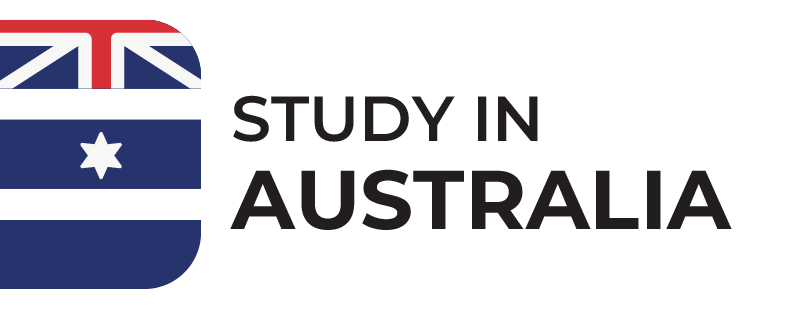Known for its high standard of living, beautiful sceneries, and Aboriginal culture, Australia is the place to be if you’re planning to study abroad. This diverse and friendly country is home to exceptional schools and a great education system. But how does the educational system of Australia function? Here is everything you need to know.
Table of Contents
How Is the Education System of Australia Structured?
Education in Australia is primarily regulated by the Australian Government and individual State and Territory governments on the private and public levels. Depending on the state and territory, education is compulsory from age six to 15, 16, or 17.
The Australian education system is structured into four main sectors:
- Primary School Education
- Junior Secondary School Education
- Senior Secondary School Education
- Tertiary Education
Primary School Education
Primary school education in Australia typically runs for seven or eight years and starts at Foundation programs (kindergarten/preparatory/preschool) until Year 6 or 7. It is compulsory for children to have started primary school by the time they are six years old. This means that they finish primary school by the age of 11 to 12 years old.
Early primary school curriculums focus on developing students’ literacy and numeracy, social skills, and foundational knowledge. The upper primary school focuses on the further development of those skills and includes subjects such as mathematics, English, science, social studies, physical education & health, art and craft, etc.
Junior Secondary School Education
Depending on the jurisdiction, secondary school education in Australia includes either a combination of middle school (junior secondary) and high school (senior secondary) or high school attendance only. However, most Australian states and territories do not apply the middle school system.
In states and territories whose jurisdiction includes middle schools, such as the Northern Territory (NT), students attend years 7 to 9 in middle school and years 10 to 12 in high school. Junior secondary school education lasts four years and includes years 7 or 8 to 10.
Senior Secondary School Education
In states with jurisdictions that include only primary and secondary school education, students finish primary schooling and attend high school (senior secondary school) typically from ages 13 to 18 years old.
High schools in Australia include subjects in English, Mathematics, Science, and Humanities & Social Sciences. Upon completing senior secondary school education, students receive a Senior Secondary Certificate of Education. The Curriculum, Assessment and Certification Authority (ACACA agency) of each state or territory in Australia is responsible for issuing this certificate. Students who complete high school can also take on Vocational Education and Training (VET) as part of their Senior Secondary Certificate of Education.
Tertiary Education
Tertiary education in Australia includes higher education (universities) and vocational education and training (VET).
Vocational Education and Training
The Australian Vocational Education and Training (VET) qualification is an education pathway that is designed to provide students with industry-specific skills and prepare them to join the workforce. This system is supported by the Australian Qualifications Framework (AQF), which has provided multiple flexible pathways. As part of this program, students can enroll in courses, qualifications, industry-recognized skillsets, and units of competency.
VET qualifications include:
- Certificate I
- Certificate II
- Certificate III
- Certificate IV
- Diploma courses
- Advanced Diploma courses
Higher Education
If you’re interested in earning an advanced degree, the higher education sector of Australia offers plenty of opportunities. This type of education involves the completion of formal degrees and leads to earning an academic degree.
University Types
Australia has 43 universities in total, two of which are international and one a private specialty university.
From 40 Australian universities, the ‘Group of 8’ is distinguished as the group of Australia’s world-leading research universities. These universities include:
- The Australian National University
- Monash University
- The University of Adelaide
- The University Melbourne
- UNSW Sydney
- The University of Sydney
- The University of Queensland
- The University of Western Australia
Degree Types
Australian universities offer a number of different qualifications you can obtain and study for, which include:
- The Associate Degree. This is a short-cycle study program with a duration of two years. This degree is often a pathway to a bachelor’s degree or to an Advanced Diploma in a specific industry. An associate degree covers foundational theoretical and practical knowledge that prepares you for employment.
- The Bachelor Degree. An undergraduate degree that lasts three to five years, depending on the program. This type of degree is usually the basic qualification to enter a field of work and deals with teaching the principles and skills you will need in that field. Bachelor’s degree programs are further categorized into Bachelor of Arts (BA) and Bachelor of Science (BS or BSc).
- The Bachelor Degree (Honours). A degree granted to students who perform exceptionally well in their bachelor’s degree program. This degree includes an additional year of studies after completing a bachelor’s degree, so you can graduate with honours (Hons).
- The Graduate Certificate. A certificate that students can obtain after completing their undergraduate program. This type of program lasts about six months and commonly involves topics that expand on previous knowledge and skills gained in a specific area of study.
- The Graduate Diploma. A one-year program completed upon obtaining an undergraduate degree. This qualification intends to teach students how to apply specialized knowledge in different contexts and gain additional skills.
- The Master’s Degree (Coursework). A one-to-two-year program that students undertake after graduating from a bachelor’s degree program. A master’s degree (coursework) involves structured learning, traditional coursework, and some independent research in a specific study area.
- The Master’s Degree (Research). Another type of master’s degree in Australia that lasts about two years. This type of degree is also obtained after a bachelor’s degree, and it involves supervised study and research into a field of study.
- The Doctoral Degree. It is the highest degree offered by Australian universities, and typically takes three to four years to complete. Doctoral degree programs include two categories: the Doctoral Degree (Research) and the Doctoral Degree (Professional).
The research degree leads to the Doctor of Philosophy award and is characterized by an independent supervised study that produces outcomes and findings introduced in a thesis, dissertation, or another form of publication. The professional doctorate involves advanced coursework and research that leads students to gain professional expertise.
Grading System
The grading system in Australian schools varies between different states and territories, as well as individual institutions. In primary and secondary education, most schools apply the A to F grading system, with A being the highest grade and F being the lowest or failing grade.
Tertiary education institutions in Australia use various grading systems that suit their needs. For example, some universities use High Distinction (HD) as the highest grade name, followed by D for Distinction, CR for Credit, P or PW for Pass, and F for failing i.e. the lowest grade.
Some universities use a similar grading system, with the addition of Pass 1 (P1) & Pass 2 (P2) and Fail 1 (F1) & Fail 2 (F2). Some other universities use the A to F grading system, with A being the highest grade and F being the lowest or failing grade.
Australia Education System for International Students
Australia is fairly welcoming toward international students, especially as it faces a harsh labour shortage after the COVID-19 pandemic and consequently switches to a demand-driven immigration system.
The international student enrolment rate is also expected to grow from 650,000 to 940,000 by 2025, according to the Australian Trade and Investment Commission. And if this news isn’t convincing enough, seven out of other excellent Australian universities made it to the top 100 global universities.
Considering these incentives and the fact that English is the official and main language of instruction in Australia’s education system, studying in this country is quite a rewarding experience.
If you’re interested in studying in Australia, you will have to check university entry requirements and how to submit your application, as well as country-specific student visa requirements.
If you’re a student or future student in Australia, you can be confident about receiving a top-notch education due to its successful education system and the various educational resources that are available to students.

